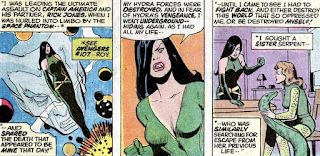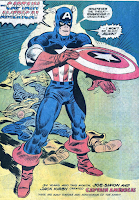I did a few of those decade-crawls through a targeted character (Batman and Hulk in the 70s, Fantastic Four in the 60s, couple others). I find them mostly all unreadable now - I actually spent a good but of time going back through them and removing, or so I thought, extraneous covers here and there and generally cleaning them up/ trying to un-bloat-ify them, but my changes apparently didn't take. Good to discover! I was going to do more of that kind of stuff (cleaning up old posts) but who needs it if the save/update function isn't working for old posts.
But this post isn’t about the past... Well. Except it kind of is, literally, about the past: a year in the life of the web-slinger, 1976!
 |
| Minus whatever was going on in the newspaper strip. |
I covered some of these in the Spidey Super Stories posts, but I went through them again to see what was going on. Lots of stuff with the Spider-Mobile. That makes a few appearances in the other titles, too.
This all was a little before my time. I didn't realize the car was designed to kill Spidey. That's kind of cool, I guess. It also makes the later alien-costume thing even lamer than it arguably was/is; they already did this where Spidey-is-menaced-by-his-accessories thing. (Wait wait, though - what if it was his COSTUME?) It also makes the above a little confusing - isn't Spidey worried the car will try to kill him in the race? Also, I love the Shocker-mobile - but that's the magic of Spidey Super Stories.
Over in Marvel Team-Up, there’s a time travel caper that accounts for a stretch of issues and guest-stars, though not as many time-specific ones as you'd think, given the number of those in even the Marvel-verse of 1976. It does feature some kind of demonic Cotton Mathers, though, so that's something. (And some wry commentary, perhaps, on the bicentennial from Marvel's bullpen.)
 |
| Say true, Cap. |
It’s my last official write-up for Spidey, so I’ll be candid: if you’ve seen one or two Sal Buscema panels, you’ve seen them all, and ditto for Bill Mantlo. Both maintained acceptable baseline. As an editor, I’d have them both on speed dial – and everyone at Marvel did. I don’t mean to shortchange their work as professionals, just not the brightest-burning of Marvel’s bullpen.
 |
| from MTU 47. |
 |
| A grisly end to MTU 44. |
Amazing Spider-Man is likely the best of the lot, if only for the Andru/Esposito art and the stretch of interconnected stories from 155-159. I liked those so much I covered Marvel Tales just so I could look at them when I did '81 for Spider Man in the 1980s. But are they memorable for anyone who didn't read them as a kid? The eternal question. I'm not sure. I'd love to see it all the capper for a good season of Spider-TV, though: the W.H.O.-dunit caper to the Doctor Octopus/Aunt May romance (weird!) to Ned and Betty getting married to the Hammerhead ghost and all else.
Revisiting it I see the strings a bit more, but that’s okay. In other issues, in no particular order: (1) Peter keeps leaving MJ places, (2) He keeps getting his costume covered in sewage and such, (3) the Shocker! (4) the Spider-Mobile! Again. Not that Spidey Super Stories counts. In this one, the Tinkerer has "tinkered" with it and hi-jinks ensue. At the end Spidey leaves it hanging off the side of some building inexplicably. (5) Some carnies and X-intrigue. That's X-Men, don't get excited. And (6) There's one of those former high school hero turned down on his luck mixed up with the mob sort of stories whose act of redemption ties into his high school glory as well as redeems the little girl he leaves behind. Except, he dies during it all, as Spidey busts up the kidnapping stuff. In true Marvel fashion this girl should've grown up to hate Spider-Man; I wonder if anyone revisited this? She hates two things: football and Spidey.
 |
| Peter Parker had this place through the 80s, I think. |
 |
| Right soundtrack and this is the best thing ever. |
The annual introduces the Fly, above. Fairly natural foe for Spider-Man. Years later the original Tarantula turned into an actual tarantula-man hybrid for a memorable three-parter (ASM 234-236) and died. Looking back that should've been the Fly instead of the Tarantula, right? Maybe they thought it was too on-the-nose. It'd have scooped the Cronenberg reboot, though, by a few years. Anyway, I had this one, back in the day. This was one of my first before-my-time purchases, I can't recall how much I paid - in allowance money, whatever it was, it was enough.
As a kid I had a subscription to Green Lantern for a few years when Gil Kane was doing an amazing stretch of covers. I had no idea of his long pedigree in comics at that time. I doubt I noticed it was the same artist here in the annual, either.
~
If you were a kid in 1976 and this was your first year of Spider-Man (followed by a live action show in 1977, crappy as it was) would it have led you to becoming a lifelong Spider-addict? Anything's possible, I guess. Chances increase if you throw in everything Marvel Tales was reprinting at the time.
Here's some leftover pictures from all of the above:
Earlier this year I picked up the Marvel Index to Spider-Man. Those covers are great. I'd hoped the cover to issue four covered the spirit of '76, but no luck. The issues discussed above are indexed in this issue:
Not a bad cover. But the one I was hoping for is this one.
I love that. Great image to end on. That's Ron Frenz and John Romita, Sr., incidentally my first favorite Spider-artists (and enduring ones). Thanks for everything, gents.


























































































